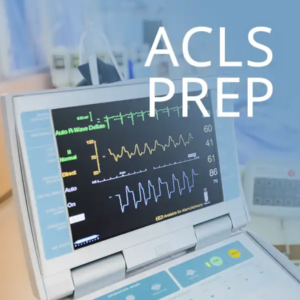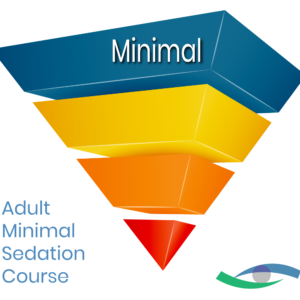Sedation is vital to ICU patient care, balancing the need for comfort with the demands of intensive medical interventions. Appropriate sedation manages pain, reduces anxiety, and prevents agitation, making it easier for patients to tolerate necessary but often uncomfortable procedures. However, both under- and over-sedation carry serious risks, so delicate administration is paramount.
The Importance of Sedation in the ICU
From the patient’s perspective, sedation provides relief from the physical and psychological stress of being critically ill. Imagine a patient recovering from major surgery who is experiencing severe pain; appropriate sedation alleviates this discomfort and promotes healing by allowing rest. It also instills a sense of calm in the patient despite their critical health condition.
For healthcare providers, sedation is a tool that facilitates various interventions, ensuring patient cooperation and improving procedural outcomes. For instance, sedation is required for patients on mechanical ventilation, as it eliminates distress and facilitates better synchrony with the ventilator. Sedation also makes invasive procedures possible, including central line placements, which are distressing if performed while fully conscious.
How Sedation Promotes Patient Comfort
Sedation is the key to combating physical and emotional stress in the ICU. Consider the many benefits it provides the patient:
- Pain management: Sedation manages pain for patients with traumatic injuries and during recovery from surgery. Administering intravenous opioids is a common approach to managing post-operative pain. This technique prevents the pain from becoming unbearable, allowing the patient to rest and recover more effectively.
- Anxiety reduction: The ICU environment can be overwhelming and anxiety-inducing, with its unfamiliar sounds and smells and frequent interventions from medical staff. Sedation reduces anxiety so patients can cope better with their surroundings. Similarly, sedatives make the experience of mechanical ventilation less frightening and more manageable for patients experiencing acute respiratory distress.
- Agitation prevention: Certain medical conditions and medications spur agitation in ICU patients. Carefully administered sedation prevents outbursts, allowing the patient to remain responsive yet calm. This is particularly important in patients predisposed to agitation, such as those experiencing withdrawal symptoms, sleep deprivation, medication side effects, or dementia.
Key Considerations in ICU Sedation
When managing sedation in the ICU, a one-size-fits-all approach simply doesn’t work. The diverse needs of critically ill patients require a customized strategy that balances comfort and safety. Here are the top considerations healthcare providers must keep in mind when administering sedation in the ICU:
- Patient variability: Everyone responds a little differently to sedative agents, with factors such as age, weight, organ function, pre-existing conditions, and concurrent medications having the biggest impact. This variability calls for an individualized approach, where sedation is carefully tailored to achieve the desired effect without causing harm. For instance, elderly patients may require lower doses due to their increased sensitivity to sedatives.
- Use of sedation scales: Sedation levels in the ICU are often monitored using standardized scales, such as the Richmond Agitation-Sedation Scale (RASS) or the Sedation-Agitation Scale (SAS). These tools help clinicians assess whether a patient is appropriately sedated, ensuring that they are neither under-sedated, which could lead to agitation and discomfort, nor over-sedated, which could result in prolonged hospital stays or complications like ventilator-associated pneumonia.
- Delirium and cognitive impairment: Over-sedation contributes to delirium, a common and serious complication associated with long-term cognitive decline and increased mortality rates. To mitigate this risk, healthcare providers should implement sedation protocols that limit sedative use and promote early mobilization. Sedation vacations, or periodic interruptions of sedation, allow healthcare providers to assess the patient’s neurological status and readiness for weaning off sedation.
- Sedation tolerance: Long-term use of sedatives can lead to tolerance, requiring higher doses to achieve the same effect. Combining different medications and techniques can enhance sedation effectiveness while reducing the risks associated with high doses of a single sedative. This approach, known as multimodal analgesia and sedation, involves the use of opioids, benzodiazepines, and non-pharmacological interventions, such as music therapy or relaxation techniques.
- Sedation withdrawal: Withdrawal symptoms may occur if sedation is stopped too abruptly. Gradually weaning a patient off sedatives ensures a smoother transition and minimizes withdrawal-related complications.
Optimizing Sedation Protocols
Selecting the right sedation protocol for each ICU patient involves careful consideration of several factors, including the patient’s medical condition, the desired depth of sedation, and the potential for adverse effects. Here are some examples of how to provide proper sedation care:
- Continuous assessment: Sedation is a continuum. The patient’s state is in constant flux, and therefore, ongoing monitoring is vital to gauge their changing condition. This includes assessing sedation levels using standardized scales and regularly evaluating the need for continued sedation.
- Multidisciplinary collaboration: Effective sedation management in the ICU requires a team approach involving intensivists, nurses, pharmacists, and respiratory therapists. Each team member brings unique expertise for a comprehensive and balanced sedation strategy that addresses all aspects of patient care.
- Following current sedation guidelines: Adhering to updated sedation guidelines from the American Society of Anesthesiologists (ASA) and the American Association of Nurse Anesthesiology (AANA) ensures that sedation practices are evidence-based and reflect the latest advancements in patient care. These guidelines include being prepared to handle complications if a patient becomes more deeply sedated than expected and having certain airway management skills, even when only conducting minimal to moderate sedation.
Earn Your Sedation Certification
Sedation in the ICU is a delicate balance of ensuring patient comfort while preventing complications. At The National Sedation Center, Inc., we emphasize the importance of proper sedation training for healthcare providers, offering instructor-led programs that focus on essential airway management skills often overlooked in traditional education. Our commitment to quality and affordability sets us apart, and we hold our students accountable for their certification to ensure they are fully prepared to manage sedation safely and effectively. Contact us today to learn more about our adult sedation courses and how we can help you enhance patient care in the ICU.






